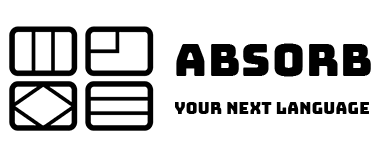There are mountains of evidence showing that comprehensible input is the most effective way to learn a new language. This method, which we often refer to as the absorption method, is similar to immersion learning but is done in a way that doesn’t hurt your brain so much.
Comprehensible input is all about listening and reading in the target language, but it has to be done in a way that allows you to understand the meaning of the words and phrases you encounter. The key is to focus on content that is just beyond your current level of proficiency, something that stretches you a little but not too much. This way, you can still follow the conversation or the story, but you will also learn some new words and grammar structures along the way.
One of the biggest advantages of comprehensible input is that it creates a context for learning. You don’t have to memorize isolated words or grammar rules, but you can see how they work in real-life situations. You can also notice patterns and exceptions by comparing different examples, and you can develop a sense of what sounds right and what doesn’t.
Another benefit of comprehensible input is that it takes the pressure off performance. When you learn a language through drills, tests, and exams, you have to produce correct answers on demand, which can be stressful and frustrating. When you learn a language through input, you can relax and enjoy the process of discovery. You can listen to music, watch movies, read books, or have conversations without worrying too much about mistakes or misunderstandings. Of course, you will make mistakes and you will have to clarify some points, but that’s part of the learning process.
Comprehensible input is not a magic formula, though. You still have to put in the time and effort to expose yourself to the language as much as possible. You also have to be curious and motivated to learn, and willing to experiment with different sources of input. Some people enjoy reading news articles, others prefer watching TV series. Some like to practice with friends or tutors, others prefer to listen to podcasts or audiobooks. The key is to find what works for you, and to keep exploring and challenging yourself.
Evidence for Comprehensible Input
These are some citations of studies showing that reading in a target language at a reasonable grade level – rather than reading with a dictionary and a translator out – is one of the most effective ways to improve the absorption of a new language.
Aka, N. (2018) Reading performance of Japanese high school learners following a one-year extensive reading program, Reading in a Foreign Language 31(1), 1-18. https://nflrc.hawaii.edu/rfl/item/414
Suk, N. (2017).The effects of extensive reading on reading comprehension, reading rate, and vocabulary acquisition. Reading Research Quarterly, 52(1), 73-89. https://ila.onlinelibrary.wiley.com/doi/full/10.1002/rrq.152
Hafiz, F.M. & Tudor, I (1990). Graded readers as an input medium in L2 learning, System, 18 (1), 31-42.
https://www.sciencedirect.com/science/article/pii/0346251X90900262
Cho, K.-S., & Krashen, S.D. (1994) Acquisition of vocabulary from the Sweet Valley Kids series: Adult ESL acquisition, Journal of Reading, 37 (8), 662-667
http://www.sdkrashen.com/content/articles/1994_sweet_valley_high_with_kscho.pdf
How can I learn this way?
You can read anything that you can comprehend in the new language. One method is through our method of absorbing a language with simple stories starting in your native language.
